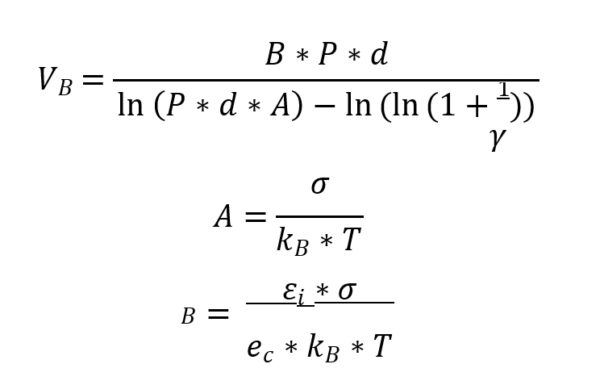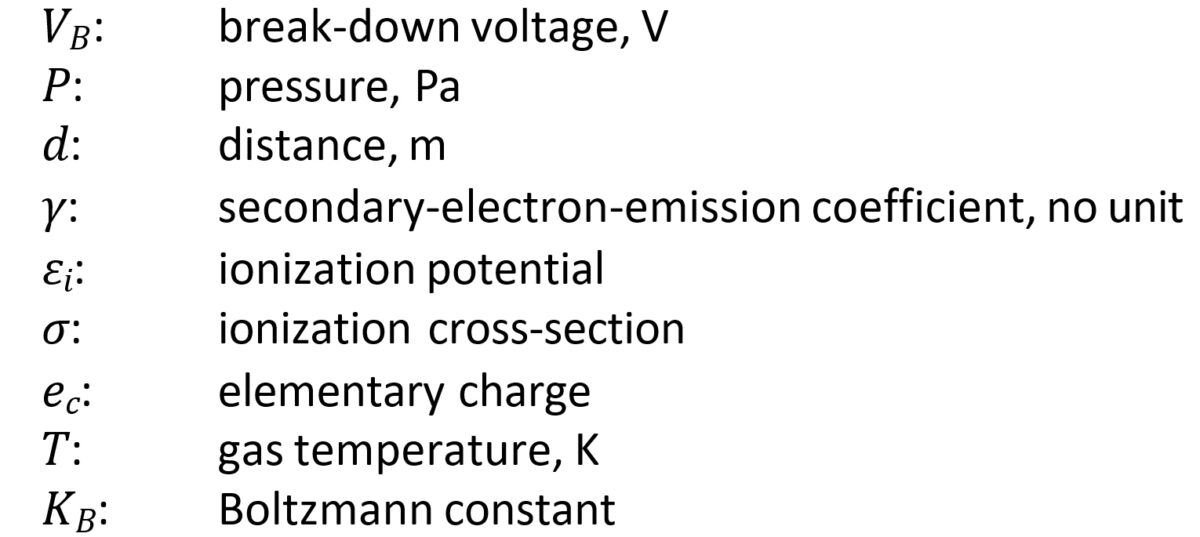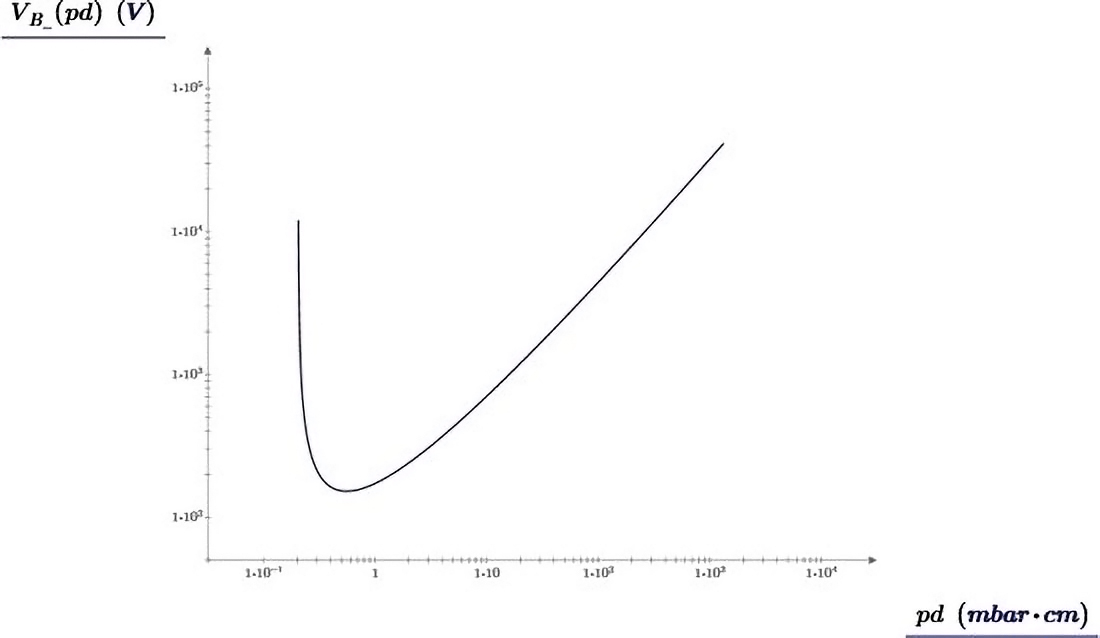Introduction
An electrical connection in an application with low-pressure conditions might fail due to an electrical breakdown between separated conductors, which would operate fine at ambient conditions. This technical note covers why this is the case, and Paschen’s Law, which describes this effect.
Electrical breakdown
Electrical breakdown is the process in which a large current starts to flow through an electrical insulating material due to a large voltage across this insulator: The insulator loses its insulation property and becomes a conductor. In turn, this large current causes heating and can damage the component and/or power supply.
In the case of a gaseous insulator, the voltage at which this breakdown occurs depends on the distance between the electrodes, the material (gas) separating the electrodes as well as the temperature and pressure of the gas. Additionally, the shape of the electric field and electrode properties also impact the breakdown voltages.
Breakdown mechanism in air
Breakdown in the air is reached when an electron is accelerated to such an energy level that it will ionize a molecule (e.g. nitrogen) and in turn release another electron to be accelerated. At standard conditions for temperature and pressure, this will happen in an electric field of about 43 MV/m.
At higher pressure, the electron will collide with many different molecules which randomize its direction: not necessarily in the direction of acceleration caused by the electric field. Hence, the electron may decelerate due to the electric field and have not enough energy to release an electron at the following collision.
At low pressure, the electron will simply have a lower chance of collision: The electrons may be accelerated to high energy levels due to the long mean free path, but the electrons will have fewer collisions.
In between, the electron will have enough time (space between molecules) to accelerate to sufficient energy and then collide with a molecule to in turn release another electron (ionization by collision). This released electron will also be accelerated by the electric field and can also collide with a molecule: Essentially creating an avalanche effect resulting in many released electrons flowing.
In this ‘in-between’ pressure range, the electric field between the electrodes at which electrical breakdown occurs is smaller than at low or high (atmospheric pressure) pressure.
Paschen’s law – equation
One way to quantify this breakdown voltage is Paschen’s Law. This is an equation that gives the inception voltage for electrical discharge as a function of the distance between two electrodes and the gas pressure.


Equation 1 – Paschen’s Law
Coefficients A & B are related to the saturation ionization in the gas at a particular electric field strength and gas pressure & to the excitation and ionization energies. The coefficients A & B are roughly constant for a specific gas over a restricted range of electric field and pressure, and a determined experimentally. (For example, air, in the range of 45 to 750 V/m*Pa-1, A = 113 kPa*cm-1, B = 2738 V/(kPa*cm-1)
Paschen’s law – curve

Figure 1 – Paschen’s curve for air, using Equation
Figure 1 shows the Paschen curve for air, using equation 1. If the distance (geometry) is kept constant and the pressure drops; the breakdown voltage is getting smaller. With even lower pressures, the breakdown voltage comes back up again
Vacuum motors and feed-throughs
Paschen’s law as discussed above requires several conditions that are typically not true for real-life applications. For example, the law is valid for a homogeneous electric field (infinite parallel plate electrodes) + assumptions about electron generation. The equation also loses accuracy for very small or large gaps.
Still, Paschen’s law clearly indicates that the breakdown voltage drops quite low in the 0.01 mbar to 100 mbar range. Without further mitigation, any ‘open’ conductors where the gas/vacuum is in an environment with a typical operating voltage may lead to problems.
Within the motor, the insulation of conductors and coils does not consist of gas/vacuum. Therefore, the motors are not susceptible to the low breakdown voltage within low-pressure conditions. Any electrical connection with a clearance or creepage path is at risk. Often the system designer specifies a minimum pressure before the motors can be energized to prevent problems.
Ask us directly

Mike Rolink and Stefan Jansen
Application Engineers
“Do you have a question about a motor? Or do you need technical support during an installation? Call us and one of our Application Engineers will help and support you throughout the entire process.”
Ask your question